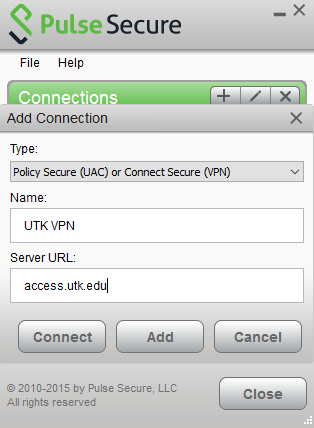
This article covers how students, faculty, and staff install the Pulse Secure VPN client on Mac OS X 10.13 and higher.
- On the other hand, I hope until this reviews about it Pulse Secure Vpn Windows 10 Download And Ssl Vpn Client For Mac Download will always be useful.
- Where to donwload Pulse Secure Client 9.1.3 from I am using Mac OS Catalina and need to connect to client's VPN network. Where can I download the latest client which works with Catalina?
Nonetheless, I hope this reviews about it Mac Vpn And Pulse Secure Vpn Client Download Mac will possibly be useful.
Junos Pulse For Mac
Mac OS Updates

Pulse Secure is constantly working to keep their client functioning with the latest Mac operating system. A new client will be released when needed to support any OS updates.
Mac OS 10.15 - Catalina
Mac users who upgrade to Catalina (macOS 10.15) may need to uninstall the Pulse Secure client and reinstall it if they find the application no longer functions after the upgrade.
Installing Pulse Secure on Mac OS 10.13 or 10.14
- Download the Pulse Secure Desktop client for Mac OS X.
- Click on the file to extract the installer.
- Double click on the pkg file to initiate the install process.
- Once the installer begins, click Continue.
- Click Install to begin the installation.
- During the installation process you should expect to see several pop-up messages informing you of security steps that need to be taken to complete the install.
- Click OK on the first two messages.
- Click 'Open Security Preferences' in the third message to open up the 'Security & Privacy' settings window.
- Click OK on the first two messages.
- Once the Security & Privacy window has opened, look for the following message: System software from developer 'Pulse Secure LLC' was blocked from loading.
- Next to the message, click Allow to enable the extension.
If you do not receive the above mentioned pop-up messages, you will need to manually permit the Pulse Secure Client the required access.
If you wait longer than 30 minutes to complete this process, you will need to uninstall and reinstall the client and then follow this process again.- To manually permit access to the client,
- Click the Apple menu at the top left of your desktop.
- Click System Preferences.
- Click Security & Privacy.
- Click the lock to make changes.
- Click the General tab.
- Under Allow apps downloaded from, select App Store and identified developers
- Look for the following message: System software from developer 'Pulse Secure LLC' was blocked from loading.
- Next to the message, click Allow to enable the extension.
- To manually permit access to the client,
- Close the Security & Privacy window. The kernel extension will have been authorized and full functionality of the Pulse Desktop client should be available.
Installing Pulse Secure on Mac OS 10.15 or higher
- Download the Pulse Secure Desktop client for Mac OS.
- Click on the file to extract the installer.
- Double click on the pkg file to initiate the install process.
- Review the following warning, select 'OK'
- Navigate to System Preferences > Security & Privacy > General
- Find the warning ' 'PulseSecure.pkg' was blocked from use because it is not from an identified developer.' Select 'Open Anyway'
- Review the following warning, select 'Open'.
- Run through the installation process.
Configuring the Pulse Secure VPN Client after installation is complete
- Open the Pulse Secure client, which should be shown at the top right corner of the screen.
- Create a new connection using the + in the bottom left corner.
- Enter the following info:
- Connection name of your choosing
- The server URL, vpn.uconn.edu
- Click Add.
- Close the client.
- To start the VPN session, go back to the Pulse Secure client in the top right corner of the screen.
- Select the connection you created.
- Select Connect.